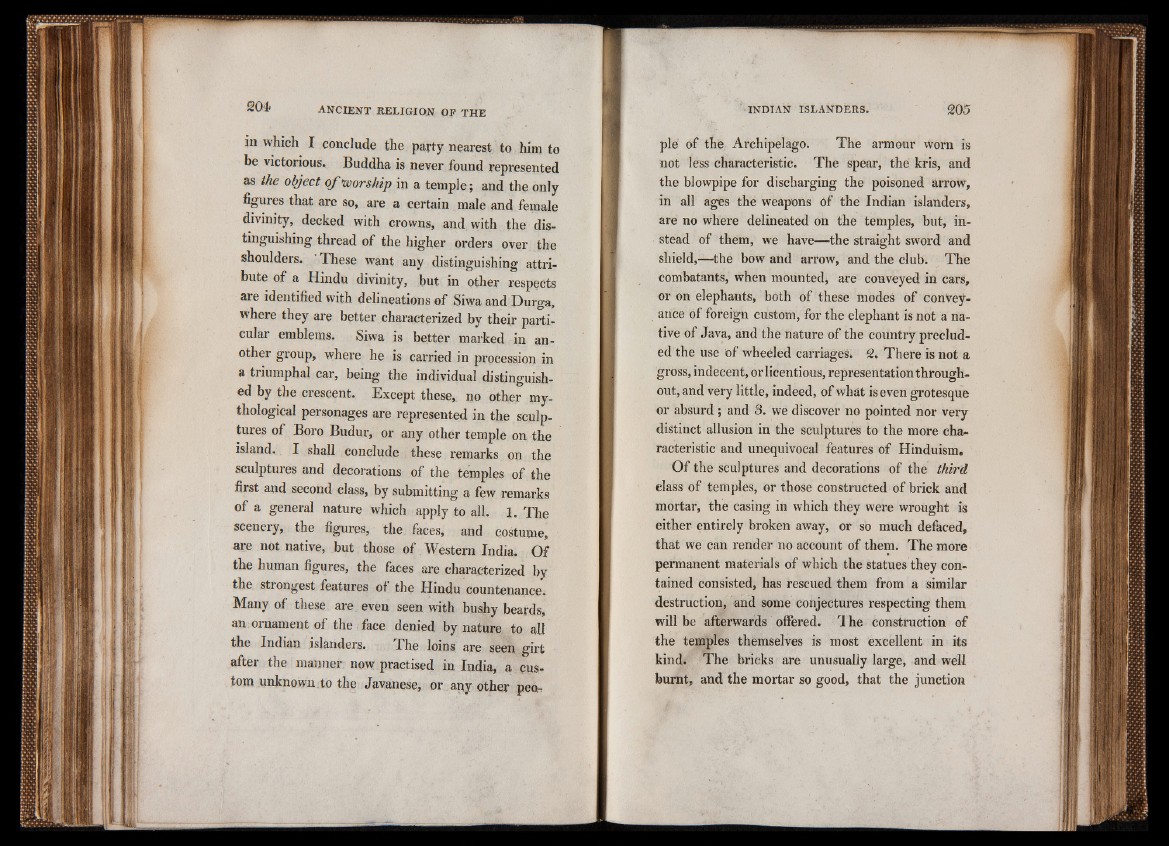
a n c i e n t r e l i g i o n o f t h e
in which I conclude the party nearest to him to
be victorious, Buddha is never found represented
as the object of worship in a temple; and the only
figures that are so, are a certain male and female
divinity, decked with crowns, and with the distinguishing
thread of the higher orders over the
shoulders. These want any distinguishing attribute
of a Hindu divinity, but in other respects
are identified with delineations of Siwa and Durga,
where they are better characterized by their particular
emblems. Siwa is better marked in another
group, where he is carried in procession in
a triumphal car, being the individual distinguished
by the crescent. Except these, no other mythological
personages are represented in the sculptures
of Boro Budur, or any other temple on the
island. I shall conclude these remarks on the
sculptures and decorations of the temples of the
first and second class, by submitting a few remarks
of a general nature which apply to all. 1. The
scenery, the figures, the. faces, and costume,
are not native, but those of Western India. Of
the human figures, the faces are characterized by
the strongest features of the Hindu countenance.
Many of these are even seen with bushy beards,
an . ornament of the face denied by nature to all
the Indian islanders. The loins are seen girt
after the manner, now practised in India, a custom
unknown, to the Javanese, or any other peo-
IN D IA N ISLAND ERS. 205
pie of the Archipelago. The armour worn is
not less characteristic. The spear, the kris, and
the blowpipe for discharging the poisoned arrow,
in all ages the weapons of the Indian islanders,
are no where delineated on the temples, but, instead
of them, we have—the straight sword and
shield,—the bow and arrow, and the club. The
combatants, when mounted, are conveyed in cars,
or on elephants, both of these modes of convey-
ance of foreign custom, for the elephant is not a native
of Java, and the nature of the country precluded
the use of wheeled carriages. 2, There is not a
gross, indecent, or licentious, representation throughout,
and very little, indeed, of what is even grotesque
or absurd ; and 3. we discover no pointed nor very
distinct allusion in the sculptures to the more characteristic
and unequivocal features of Hinduism,
Of the sculptures and decorations of the third
class of temples, or those constructed of brick and
mortar, the casing in which they were wrought is
either entirely broken away, or so much defaced,
that we can render no account of them. The more
permanent materials of which the statues they contained
consisted, has rescued them from a similar
destruction, and some conjectures respecting them
will be afterwards offered. 1 he construction of
the temples themselves is most excellent in its
kind. The bricks are unusually large, and well
burnt, and the mortar so good, that the junction